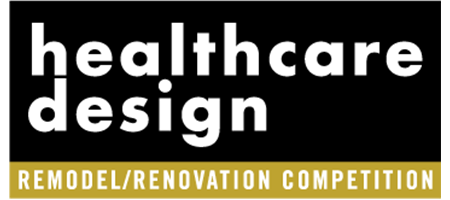
Angel Colon (Image credit: Robins & Morton)
In this series, Healthcare Design asks leading healthcare design professionals, firms, and owners to tell us what has their attention and share their ideas on the subject.
Angel Colon is an operations manager for construction firm Robins & Morton in Orlando, Fla.
Here, he shares the top five trends and issues on his mind right now, including speed-to-market pressures, the rise of multiparty agreements, and a forward-looking take on career building in the industry.
- Speed-to-market pressures and collaborative ingenuity
The number one challenge on my mind, and our clients’ minds, every day is improving speed to market for healthcare projects. Demand remains high for new and upgraded healthcare facilities as the sector exhibits strong near-term growth and competition among health systems remains fierce. There’s no easy way to further consolidate an already time-crunched multiphase process that requires planning, funding, design, permitting, and construction.
Fortunately, an emphasis on the early integration of project delivery teams is proving its power to streamline. This includes enabling designers, construction partners, owners, trade contractors, and specialty consultants to share and apply their diverse knowledge.
The greatest opportunity to impact efficiency, speed, and value is during the earliest stages of a hospital project when we can identify constructability or materiality issues before beginning work. Today’s creative collaborations show us the way forward, whether the solutions developed together lead to more precise prefabrication, supply chain mastery, overlapped building phases, adaptive designs, data ingenuity, or sustainability breakthroughs.
- Rise of multiparty agreements challenge
A noteworthy change in traditional healthcare projects is the increasing number of developer and health system partnerships or the engagement of other third-party collaborators. Both developers and health systems see opportunities and returns on the practice.
For example, there are clear benefits to distributing the upfront costs of new construction and sharing responsibilities for leasing or staffing facilities. However, we’ve found that reaching a consensus on the many decisions that must be made to move a project forward can be more complex.
Establishing jointly developed measures of success for a project (called Conditions of Satisfaction) can help anchor multiparty agreements, contracts, and the expectations of all participants. By allowing everyone a seat at the table to share how they define success in the project, we achieve clarity on the roles, responsibilities, and objectives.
- Career paths and homegrown talent
It’s no secret that the construction industry has battled a decades-long workforce shortage. Construction demand still outpaces the available workforce by more than half a million jobs in 2024. Although it may feel like a distant issue to those outside of the industry, the lack of available workforce impacts nearly everyone, increasing labor costs and potentially lengthening project schedules.
We’ve seen the benefit of believing in—and consistently investing in—on-the-job training programs that provide clear career paths. This strategy is working, providing new professionals, retaining existing team members, and creating a more diverse workforce.
Homegrown talent welcomed by and engaged in a culture of recognition, listening, and respect will propel the industry forward.
- Changing care models and their impact on construction
Healthcare at home, telehealth, outpatient services, and staff convenience are already changing healthcare models with the rise of remote and web-based solutions for outpatient care. One of the clues we can see is how our clients are adapting their plans and priorities based on staff comfort, wellness, and retention. A top-of-mind consideration is to provide facilities that are efficient but also conducive to strengthening staff recruitment and retention.
We continue to observe a delicate balancing act between design decisions that maximize cost-per-square-foot and add sufficient space for respite and rejuvenation. The emphasis on human priority may shift us into new standards of design and construction as we search for new solutions to improve the well-being for staff, patients, and guests. It’s too early to know the full impact and opportunity, but I sense that we are on the cusp of momentous changes ahead.
- Brave new world of AI and reliable data in decision making
The convergence of technology tools, quality data, robotics, and artificial intelligence (AI) is poised to usher in a new era of efficiency and sustainability that will lead construction practices forward in a big way. One promising sign is the increasing availability and reliability of data.
Whether informing decisions on building systems, carbon reduction, long-lead times, or value creation for building owners, the opportunity to harness generative AI by extracting and sharing data offers us a revolutionary basis for meeting cost, schedule, and outcome goals. These discoveries will, in my view, support our ability to make data-informed decisions about future projects, elevating integrated design and construction to new levels.
Want to share your Top 5? Contact Managing Editor Tracey Walker at [email protected] for submission instructions.












